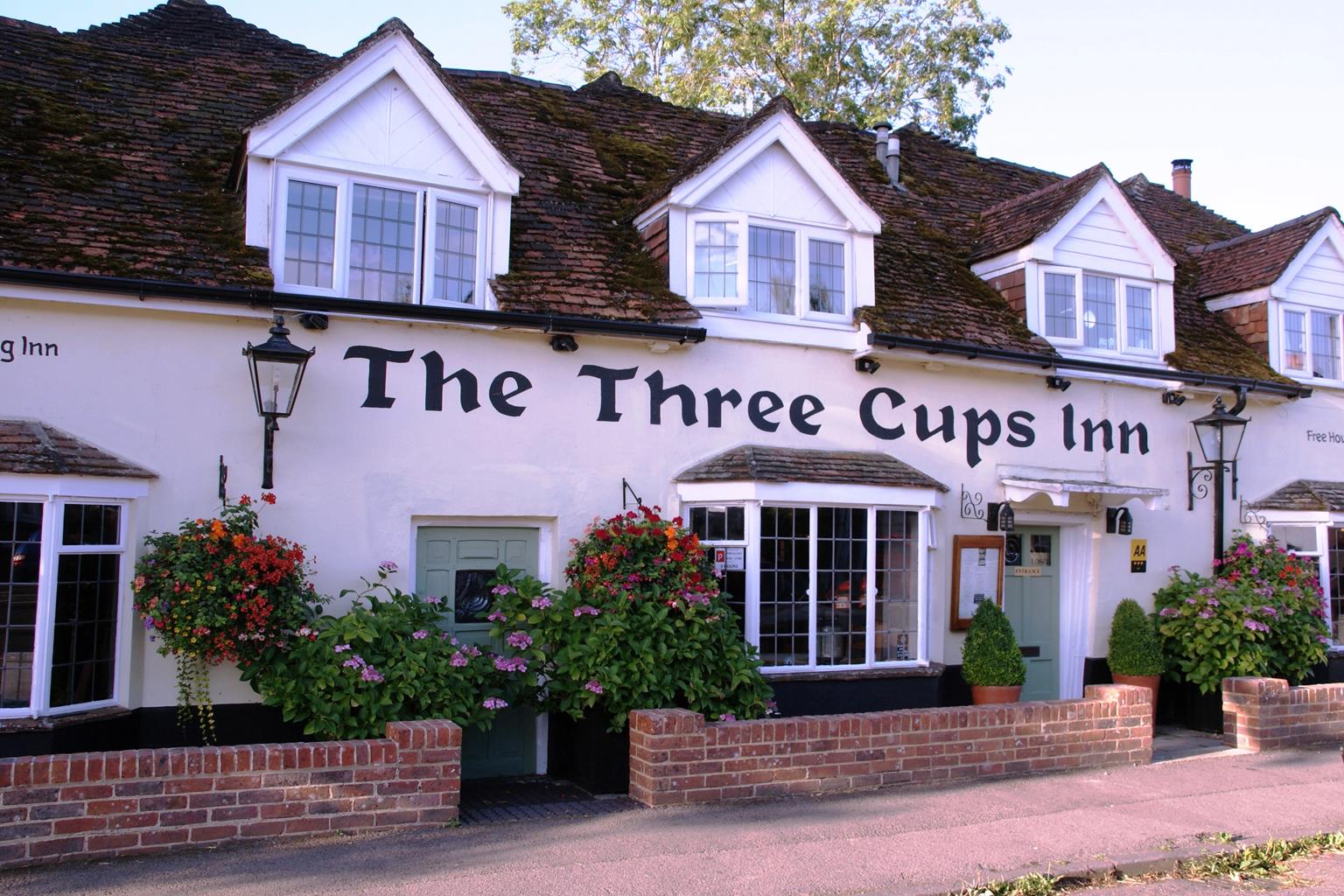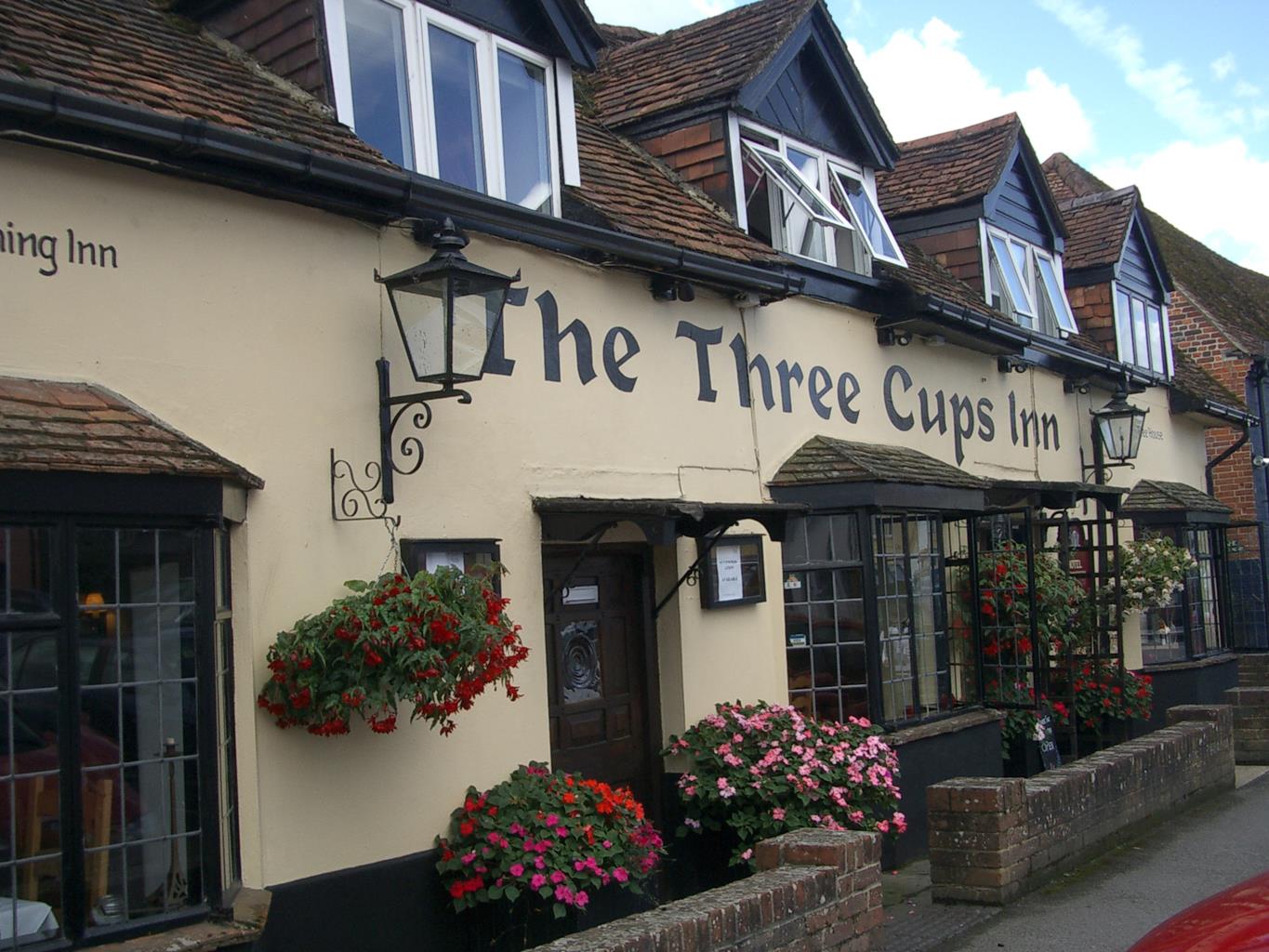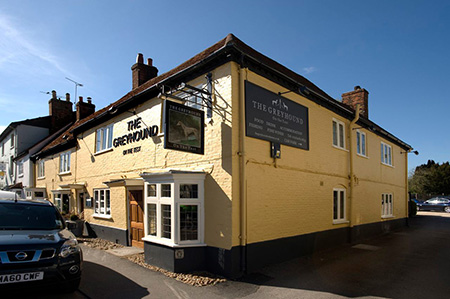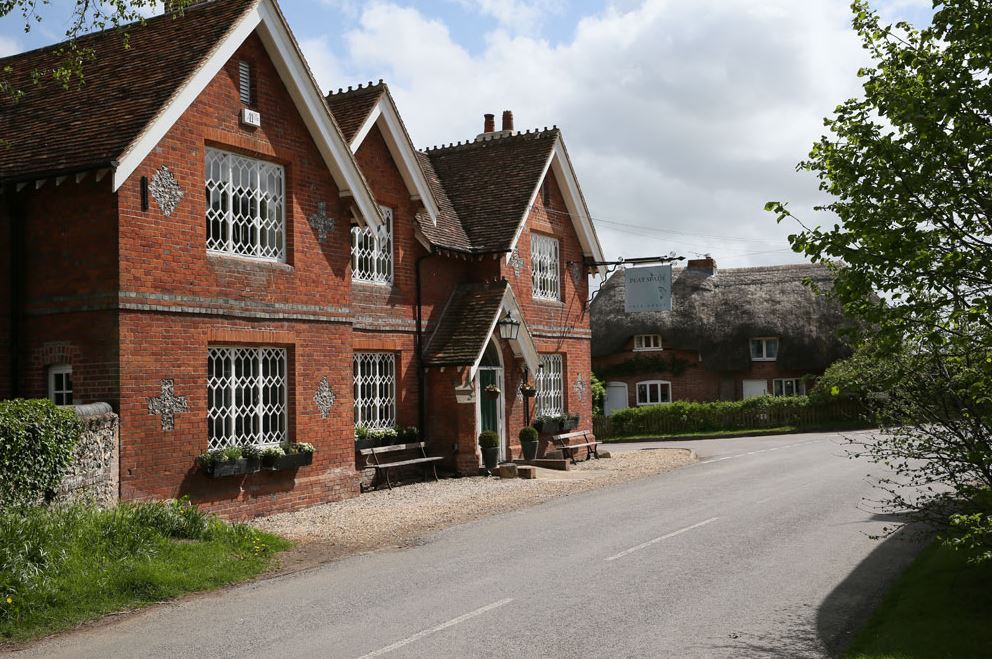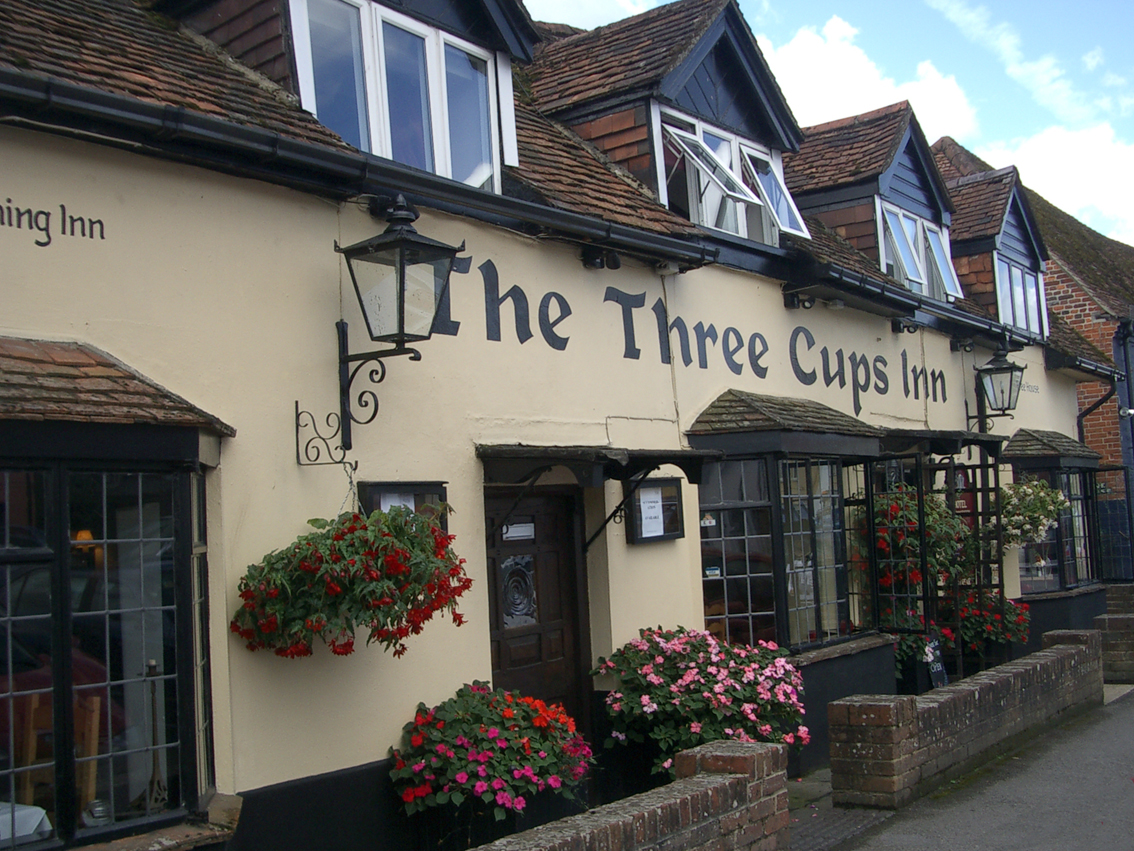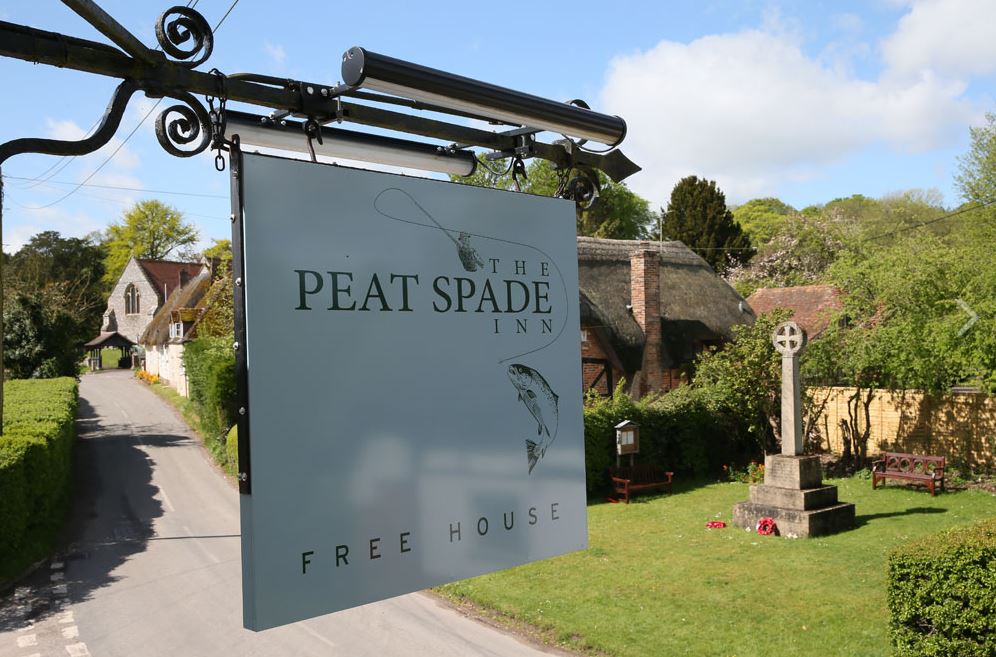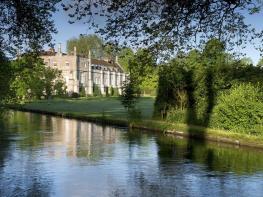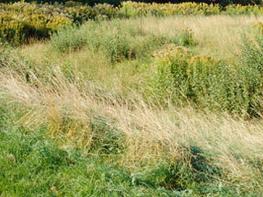Standing on Stockbridge high street, The Three Cups Inn dates from the 15th century. A former…
To Danebury Hill from Stockbridge

Tales of fish, fillies and forts accompany you on this downland walk to Danebury Ring from the River Test's fishing capital
7.7 miles (12.4kms)
About the walk
Stockbridge has developed from a frontier stronghold, built across the Test Valley by the Saxons to defend Wessex from marauding Danes, and a prosperous market town attracting Welsh sheep drovers en route to the markets in Surrey and Kent, to become Hampshire’s ‘fishing capital’. The clean waters of the River Test – one of England’s finest chalk streams – are renowned for their trout fishing. On your journey down the long main street you will cross at least six branches of the Test, and a short diversion on to Common Marsh will give you rare access to the river bank. Much of the river bank in this area is reserved exclusively for wealthy fishing syndicates. The imposing 17th-century Grosvenor Hotel is the headquarters of the oldest and most select fishing club in the world, the Houghton Club, founded in 1822. Membership is limited to 24 and the club rigorously controls the fishing of the Test. The room above the distinctive overhanging porch, built so that coach travellers could alight under cover, is where the club’s records have been kept since the club began.
Danish Dock
Towards the end of your walk, as you cross the valley at Longstock, you will see one of the distinctive thatched fishing huts that are dotted along the banks of the river. Beside the hut, on a bridge across the river, you will notice some iron traps. Originally made from hazel, they were lowered into the river to catch eels. Behind the hut and hidden in the reeds are the remains of a ‘Danish Dock’, built to harbour flat-bottomed longboats. These may have belonged to King Canute, who sailed up the Test and destroyed Romsey. Before fishing for sport dominated village life, Stockbridge maintained its importance and wealth by becoming a horse-racing centre during the 19th century. Between 1753 and 1898, a racecourse existed high on the downs above the village and was a venue for important meetings in the racing calendar, on a par with Ascot and Goodwood. A frequent visitor was the Prince of Wales (later Edward VII), who rented two properties in the village, one for himself and the other for his mistress Lillie Langtry. You can still see the old, ivy-covered stadium across the field below Chattis Hill as you make your way towards Danebury Hill. Your long and gradual climb out of the Test Valley culminates at an important Iron Age hill fort on top of Danebury Hill. This ancient earthwork covers 13 acres (5.2ha) and is a magnificent sight, with its double bank and ditch along with an inner rampart up to 16ft (5m) high in places. It was occupied by the Atrebates, a Celtic people, from about 550 to 100 bc and excavations have revealed a detailed picture of this Iron Age society. The far-reaching views across Hampshire and into Wiltshire from the fort’s summit can take in six other hill forts on a clear day.
Walk directions
Walk west along the High Street (A30), crossing the numerous braided streams of the River Test. Begin the climb out of the village and, just before the start of the dual carriageway, bear off to the left along Roman Road. Keep ahead at the end of the road, walking along the narrow defined path that climbs Meon Hill.
Just before the Meon Hill Farm units ahead of you, look out for a stile in the overgrown hedge on your right. Cross this and walk along the right-hand edge of a small orchard to a stile. Cross the A30 (with care), then walk through the narrow gap opposite and along the right-hand edge of a large field, keeping to the ditch, along the field boundary to your left.
Ignore the footpath turning on the right and keep to the main path, that eventually bears left with the field edge to a grassy track leading to a gate. Turn immediately right along a wide, hedged track and, when the track bends to the left into a field, keep ahead on a narrow grassy track to a road junction. To visit Danebury hill fort, turn left towards The Wallops for 400yds (366m), then left again along the drive to the car park and access to Danebury Hill.
Retrace your steps back to the road junction you passed before Danebury Hill and take the byway to the left beneath a height barrier. Remain on this track as it descends back into the Test Valley. Eventually it becomes metalled as it enters the village of Longstock.
At the T-junction by the church turn left then right beside The Peat Spade Inn, along ‘The Bunny’. Cross numerous streams that make up the River Test, notably one with a thatched fishing hut and replica metal eel traps.
Just before crossing a bridge over the disused Test Valley railway and the A3057, take the narrow footpath on the right. Drop down and turn right along the old railway trackbed (here forming a part of the Test Way) for about a mile (1.6km). The path eventually merges with the pavement alongside the A3057, continue to reach the roundabout by The White Hart. Turn right here to return to your car.
Additional information
Wide byways, field paths and railway track, 2 stiles
Open downland and river valley
Can run free on Danebury Hill but prohibited in hill fort area
OS Explorer 131 Romsey, Andover & Test Valley
Along Stockbridge High Street
Danebury Hill (April to October) and on Stockbridge High Street
WALKING IN SAFETY
Read our tips to look after yourself and the environment when following this walk.
Find out more
Also in the area
About the area
Discover Hampshire
Hampshire’s varied landscape of hills and heaths, downlands and forests, valleys and coast is without rival in southern England. Combine these varied landscapes and terrains with secluded and idyllic villages, complete with thatched and timber-framed cottages and Norman churches, elegant Georgian market towns, historic ports and cities, restored canals and ancient abbeys, forts and castles, and you have a county that is paradise for lovers of the great outdoors.
If you’re a walker, stride out across the high, rolling, chalk downland of the north Hampshire ‘highlands’ with far-reaching views, walk through steep, beech-clad ‘hangers’ close to the Sussex border. Or perhaps take a gentler stroll and meander along peaceful paths through unspoilt river valleys, etched by the sparkling trout streams of the Test, Itchen, Avon and Meon. Alternatively, wander across lonely salt marshes and beside fascinating coastal inlets or, perhaps, explore the beautiful medieval forest and heathland of the New Forest, the jewel in Hampshire’s crown.
Nearby stays
Restaurants and Pubs
Nearby experiences
Recommended things to do
Why choose Rated Trips?
Your trusted guide to rated places across the UK
The best coverage
Discover more than 15,000 professionally rated places to stay, eat and visit from across the UK and Ireland.
Quality assured
Choose a place to stay safe in the knowledge that it has been expertly assessed by trained assessors.
Plan your next trip
Search by location or the type of place you're visiting to find your next ideal holiday experience.
Travel inspiration
Read our articles, city guides and recommended things to do for inspiration. We're here to help you explore the UK.

